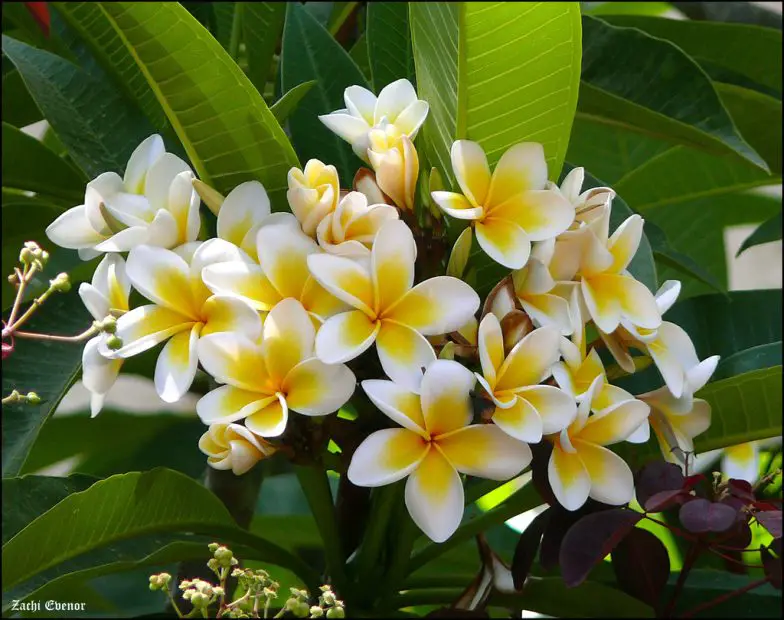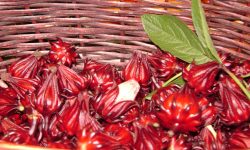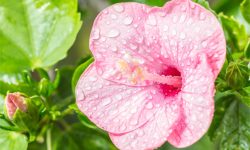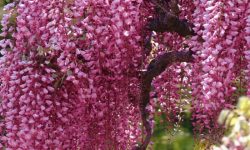Plumerias are the essence of tropical beauty, known for their stunning, star-shaped flowers and unforgettable fragrance. Whether you’re growing them in the ground or in containers, nothing compares to the burst of color they bring when in full bloom. But if you’ve ever waited impatiently for those first blossoms to appear, you’ve likely wondered—when do plumerias really bloom?
Understanding the blooming habits of plumeria is the key to enjoying their vibrant flowers for as long as possible. With the right knowledge and a few strategic care techniques, you can boost blooms, extend the flowering season, and turn your garden or balcony into a fragrant paradise from spring through fall.
Understanding the Blooming Cycle of Plumeria

Plumeria, also known as frangipani, is prized for its vibrant, fragrant blooms and tropical charm. Native to Central America, Mexico, and the Caribbean, plumerias are widely grown in warm climates around the world. To fully enjoy their striking flowers, it’s essential to understand their natural blooming cycle and what factors influence it.
Plumerias typically bloom in the warmer months of the year, usually from spring through fall, depending on the climate. In tropical and subtropical zones, blooming may begin as early as March and continue into October. The bloom cycle begins once temperatures consistently remain above 65°F (18°C), prompting the plant to shift from dormancy to active growth.
Each plumeria bloom cycle starts with the emergence of new leaf growth, followed by the development of flower spikes, also known as inflorescences. These spikes form at the tips of branches and can take several weeks to develop before the flowers finally open. Once in bloom, each cluster of flowers can last several weeks, with individual blooms lasting up to five days.
Factors That Affect Plumeria Bloom Time
Climate and Temperature
Plumerias are native to tropical and subtropical climates, which means they thrive in warm, stable temperatures. Blooming typically begins when daytime temperatures consistently stay above 65°F (18°C), with optimal flowering occurring between 75°F and 90°F (24°C to 32°C). If nighttime temperatures drop below 55°F (13°C), flower production slows or may stop altogether. In colder regions, plumerias enter a dormant phase during fall and winter. During this time, the plant conserves energy and stops growing, only to awaken once warmth returns in spring. Gardeners in cooler zones often need to overwinter their plumerias indoors or in greenhouses to protect them and preserve their bloom cycle. Understanding your USDA zone and local microclimate is essential to predict when blooms will appear and how long they’ll last.
Sunlight Exposure
Sunlight is a critical trigger for plumeria blooms. These plants crave full sun and perform best when exposed to at least six to eight hours of direct sunlight daily. Without adequate sun, plumerias will grow leggy and lush but may fail to flower. In regions with less intense sunlight, or during cloudy periods, blooming may be sparse or delayed. Gardeners growing plumerias in containers should monitor the sun exposure throughout the day and rotate or reposition their pots to maximize light. South-facing patios, balconies, or garden beds often offer the best results. In low-light situations, supplementing with grow lights can help encourage flower development, especially during the spring transition.
Watering Practices
Plumerias require a balance between moisture and drainage to bloom consistently. Although these plants are tolerant of drought conditions, prolonged dryness during the active growing season can inhibit flower development. Conversely, overwatering leads to root rot and weak growth, both of which suppress blooming. The key is to water deeply and infrequently—only when the top 1 to 2 inches of soil are dry to the touch. In spring and summer, this may mean watering once or twice a week, depending on heat and container size. During the dormant winter months, reduce watering drastically or stop altogether to prevent rot and support the plant’s natural rest cycle. Monitoring rainfall and adjusting watering frequency helps maintain the right moisture levels for healthy bloom production.
Fertilization
The nutritional needs of plumeria shift depending on the season, but high-phosphorus fertilizer is especially important during the blooming period. A balanced fertilizer won’t do the job when you’re chasing more blooms. Plumerias respond best to formulas with a higher middle number—such as 10-30-10—which emphasizes phosphorus for root and flower development. Begin feeding in early spring when new leaves appear and continue every two to three weeks through summer. Liquid or slow-release fertilizers can both be effective, depending on your schedule. Be cautious with nitrogen-heavy blends, as they cause vigorous green growth but at the cost of flower production. Micronutrients like magnesium and calcium also play supportive roles and may be necessary in soils with deficiencies. Foliar feeding with diluted Epsom salts can sometimes provide an added boost to flower formation.
Pruning and Growth Stage
Pruning plumerias isn’t just about shaping the plant—it’s a powerful tool to stimulate blooming. Flowers only develop on new growth tips, so well-timed pruning helps create more branches and more opportunities for blooms. The best time to prune is in late winter or early spring, just before the plant exits dormancy. Cutting back long, leggy branches encourages bushier growth and can lead to multiple flower spikes later in the season. However, excessive or poorly timed pruning can delay flowering for a full season. In addition to pruning, the plant’s overall maturity affects its ability to bloom. Younger plants, especially those propagated from cuttings, may take two to three years before producing flowers reliably. During this period, much of the plant’s energy goes into root and structural development rather than flowering. Patience, consistent care, and smart timing all contribute to a fuller, more colorful plumeria bloom.
Best Blooming Times by Region
Tropical and Subtropical Zones
In tropical and subtropical areas such as Hawaii, South Florida, and coastal southern regions, plumerias thrive in consistently warm temperatures and abundant sunlight. Here, the plants often start blooming as early as March and continue producing flowers in cycles until late October or November. When cared for properly—with regular feeding and pruning—plumerias in these zones can bloom nearly nonstop, providing months of vibrant color and fragrance.
Warm Temperate Climates
Areas like Southern California, central Texas, and parts of the Gulf Coast experience cooler winters but still support plumeria growth outdoors during most of the year. In these warm temperate climates, blooming usually begins between late April and early June, depending on the spring weather. Blooms tend to peak in mid-summer and taper off in early fall. Microclimates, elevation, and proximity to the coast can influence bloom timing slightly, so monitoring local weather trends is helpful.
Cooler Temperate Areas
In regions where winter frost is common, such as parts of the Midwest, Northeast U.S., or northern Europe, plumerias must be grown in pots and brought indoors during cold months. These plants usually begin blooming in June or July after being moved outdoors in late spring. For earlier flowers, gardeners can use grow lights and heated spaces during early spring to simulate tropical growing conditions. However, blooms may be fewer and shorter-lived compared to those in warmer regions.
How Long Do Plumeria Blooms Last?
Individual plumeria flowers typically last from three to seven days on the plant, depending on environmental conditions and the specific variety. However, the overall blooming season for a healthy plumeria can stretch over several months, especially in warm climates. Plants often produce multiple flushes of blooms from spring through fall, with each cluster (or inflorescence) continuing to generate new flowers for four to six weeks.
The longevity of blooms is influenced by several factors. Consistent warmth, strong sunlight, and moderate humidity can extend the blooming period and improve flower quality. In contrast, sudden drops in temperature, drought stress, or excessive rain may shorten bloom duration. Regular deadheading and timely watering can help maintain flower production and encourage more flushes throughout the season.
For gardeners aiming to enjoy continuous blooms, maintaining good care practices—like feeding with a phosphorus-rich fertilizer and protecting the plant from extreme weather—can significantly prolong the flowering cycle.
Encouraging More Blooms Throughout the Season
With proper attention and timely care, plumerias can dazzle with successive waves of flowers from late spring through early fall. To make the most of the blooming season, it’s essential to create the ideal environment that stimulates growth while supporting healthy flower development. Here’s how you can ensure your plumeria blooms to its fullest potential all season long.
Maximize Sun Exposure
Plumerias are tropical sun lovers, and without ample light, flowering will slow or stop entirely. Aim to provide at least six to eight hours of direct sunlight per day. The more sun the plant receives, the more energy it can devote to producing flowers. If you’re growing plumerias in containers, place them in a south-facing location or an open, unobstructed space where sunlight isn’t blocked by trees or buildings. Rotate the pot weekly to promote balanced growth and even blooming. When kept in partial shade or indoors, consider using supplemental grow lights to mimic natural conditions and trigger flowering responses.
Fertilize Consistently
Nutrient management is one of the most critical factors in encouraging lush, repeated blooms. Begin a fertilizing regimen in early spring and continue every two to four weeks through the growing season. Use a balanced fertilizer at first to support leaf and stem development, then switch to one high in phosphorus (middle number in NPK ratio) once blooming begins. Phosphorus promotes strong root systems and more abundant flowers, while potassium enhances overall plant health and resilience. Avoid excessive nitrogen, as this encourages leafy, non-flowering growth. Water the plant before and after applying fertilizer to prevent root burn and ensure nutrients are absorbed effectively.
Monitor for Pests and Diseases
Even a healthy-looking plant can be compromised by hidden pests that sap strength and diminish blooming power. Common offenders like spider mites, aphids, and whiteflies target tender new growth and can interfere with bud formation. Mealybugs often hide in leaf joints and feed on sap, leaving behind sticky residue and stunted development. Conduct weekly inspections, especially during hot, dry periods when pests are most active. Treat early infestations with natural remedies like neem oil or insecticidal soap. For severe cases, use systemic treatments carefully to protect the plant without harming beneficial insects. Keeping pests under control ensures your plumeria can focus energy on blooming rather than recovery.
Avoid Overwatering
Plumerias prefer a consistent but moderate watering routine. The roots are highly susceptible to rot when kept in soggy soil, especially during cooler periods or if the pot lacks drainage. Let the top inch or two of soil dry before watering again. During peak bloom in summer, plants will need more frequent watering—but only when the soil indicates dryness. In containers, always use a fast-draining mix, ideally one containing perlite or coarse sand. For in-ground plantings, amend heavy clay soil to improve drainage. Keeping roots healthy and oxygenated helps maintain flower production and reduces the risk of disease that could interrupt the bloom cycle.
Prune for Shape and Growth
Strategic pruning plays a key role in plumeria bloom performance. Trim your plumeria in late winter or early spring before new growth begins. Remove any dead, damaged, or spindly branches to improve airflow and direct energy to strong, healthy stems. Each time you prune, you stimulate the development of new growing tips—which is where flower clusters will emerge. Over time, pruning helps create a fuller, more balanced canopy that can support more blossoms. Don’t prune after buds have formed, as this can eliminate an entire season’s worth of flowers. Always use clean, sharp tools to make precise cuts and reduce the risk of infection.
Common Blooming Problems and Solutions
Soil Quality and Drainage Issues
Poor soil drainage or compacted, nutrient-deficient soil can hinder root development and ultimately limit flower production. Plumerias prefer loose, well-draining soil with a slightly acidic to neutral pH (6.0–7.0). If your plant is in the ground, amend the soil with sand, perlite, or compost to improve drainage and aeration. For potted plumerias, repot every few years to refresh the growing medium and avoid root congestion, which can interfere with nutrient uptake and bloom formation.
Stress From Environmental Changes
Sudden shifts in temperature, light exposure, or humidity can shock plumerias and cause them to delay or skip blooming. Common stressors include moving the plant indoors too early or exposing it to intense midday sun after overwintering. Gradually acclimate the plant to environmental changes, especially in spring, and avoid moving it frequently once buds begin to develop.
Improper Pruning
While pruning is beneficial for shaping and encouraging branching, cutting at the wrong time or removing the wrong parts can hinder blooming. Plumerias only flower at the tips of mature branches, so overzealous pruning in spring or summer can remove potential bloom sites. Always prune in late winter or early spring before active growth resumes, and preserve healthy tips wherever possible.
Container Size Limitations
If grown in a pot that’s too small, plumeria roots can become bound, limiting the plant’s ability to access nutrients and water. This often leads to a decrease in flower production. Repot every two to three years into a container that allows room for root expansion. Choose a pot with at least a couple of inches of space around the root ball and ensure proper drainage.
Lack of Dormancy-Induced Reset
Sometimes plumerias fail to bloom simply because they haven’t been given adequate rest in winter. If you live in a warm climate or keep your plumeria indoors all year, simulate dormancy by withholding water and fertilizer for at least 8 to 10 weeks during the coldest part of the year. This rest period encourages the plant to enter a new growth and bloom cycle come spring.
Blooming Differences Among Plumeria Varieties
Not all plumerias bloom the same way or at the same time. Understanding the subtle yet important differences among various plumeria types can help you better anticipate when and how your plants will flower—and allow you to choose the right variety for your climate and blooming goals.
Early vs. Late Bloomers
Some plumeria varieties are naturally early bloomers, producing their first flowers in late spring or early summer, especially in warm climates. These include popular types like ‘Celadine’ and ‘Singapore White’, which tend to respond quickly to rising temperatures and longer daylight hours. On the other hand, some hybrids or rarer species may take longer to start blooming, often holding off until midsummer or even late summer, particularly if they are still maturing.
Differences in Bloom Duration
Varieties also differ in how long their blooms last. For instance, ‘Duke’s Pink’ and ‘Aztec Gold’ often produce flowers that linger for weeks, providing a more extended display. Others may bloom in shorter bursts but more frequently, cycling through bloom periods with rest phases in between. These differences can influence the overall visual impact in your garden and should be considered when planning your landscape.
Scent and Color Variation
The intensity of bloom fragrance and flower color also varies by type. Some varieties like ‘Kauka Wilder’ are highly fragrant and bloom profusely, while others might offer subtle or spicy scents. Likewise, while yellows and whites tend to bloom more readily and reliably, deep reds and purples may require more heat and longer growing seasons to reach peak performance. These factors can make a big difference in cooler regions or in containers that are brought indoors for winter.
Hybrid Performance and Blooming Behavior
Modern plumeria hybrids are bred for unique colors and petal shapes, but they may also exhibit more unpredictable blooming patterns. Some hybrids are more sensitive to environmental conditions, and their flowering may fluctuate more from year to year. While beautiful and exotic, they may not bloom as prolifically or as early as tried-and-true standard cultivars unless provided with optimal care and warmth.
By learning the bloom habits of the specific plumeria varieties you grow, you can better adjust your care routine and garden expectations. Knowing whether a plant is a vigorous bloomer or a more reserved performer helps ensure you’re not disappointed by natural variations in flowering behavior.
Seasonal Care Tips to Extend Bloom Period
To extend plumeria’s bloom season, tailor your care throughout the year. In spring, start watering as temperatures warm and apply a phosphorus-rich fertilizer to encourage early buds. Full sun and gradual feeding help trigger strong flowering.
During summer, maintain regular watering, especially in dry regions. Ensure the plant gets 6–8 hours of sunlight daily. Deadhead faded blooms to promote new flower growth and reduce stress during extreme heat with partial afternoon shade if needed.
In fall, keep fertilizing lightly and ensure good sunlight to prolong blooming. As temperatures drop, reduce watering and prepare the plant for dormancy if needed. For frost-prone areas, move plumeria indoors before cold sets in.
Consistent seasonal care ensures longer-lasting color and more reliable blooms year after year.
FAQ About When Plumerias Bloom
What month do plumerias usually start blooming?
Plumerias typically begin blooming in late spring, around May or June, depending on your climate. In tropical and subtropical regions, they may start as early as April and continue through summer into early fall. Proper light, temperature, and care can accelerate this timeline and extend the bloom period.
Why isn’t my plumeria blooming even though it looks healthy?
A healthy-looking plumeria that isn’t blooming is often missing one key factor—enough sunlight. Plumerias need at least six hours of direct sun daily to produce flowers. Other common issues include too much nitrogen fertilizer, young plant age, or improper winter dormancy. Adjusting these conditions usually restores flowering.
How many times does plumeria bloom in a year?
Plumeria typically blooms once per year, but the bloom period can last for several months. With excellent care, some varieties may produce multiple flushes of flowers from spring through fall. Deadheading old blooms and providing ideal conditions encourages extended or repeat blooming.
Can plumeria bloom indoors or in containers?
Yes, plumerias can bloom in containers or even indoors near a sunny window or under grow lights. The key is mimicking outdoor conditions: plenty of light, warmth, and proper feeding. Container-grown plumerias also need a rest period in winter to reset their bloom cycle.
Do different plumeria colors bloom at different times?
While most plumeria varieties follow a similar bloom window, some color types may begin slightly earlier or later based on their specific genetics and vigor. For example, white and yellow cultivars often bloom earlier, while dark red or multicolor hybrids may take longer to set buds. Proper care helps maximize bloom time regardless of color.
Conclusion
Knowing when plumerias bloom and how to support them through each season allows gardeners to enjoy these stunning flowers to their fullest. By providing the right conditions—sunlight, warmth, proper pruning, and balanced nutrition—you can boost bloom production and extend the flowering season. With a little care and attention, your plumeria can become a show-stopping feature in your garden year after year.






